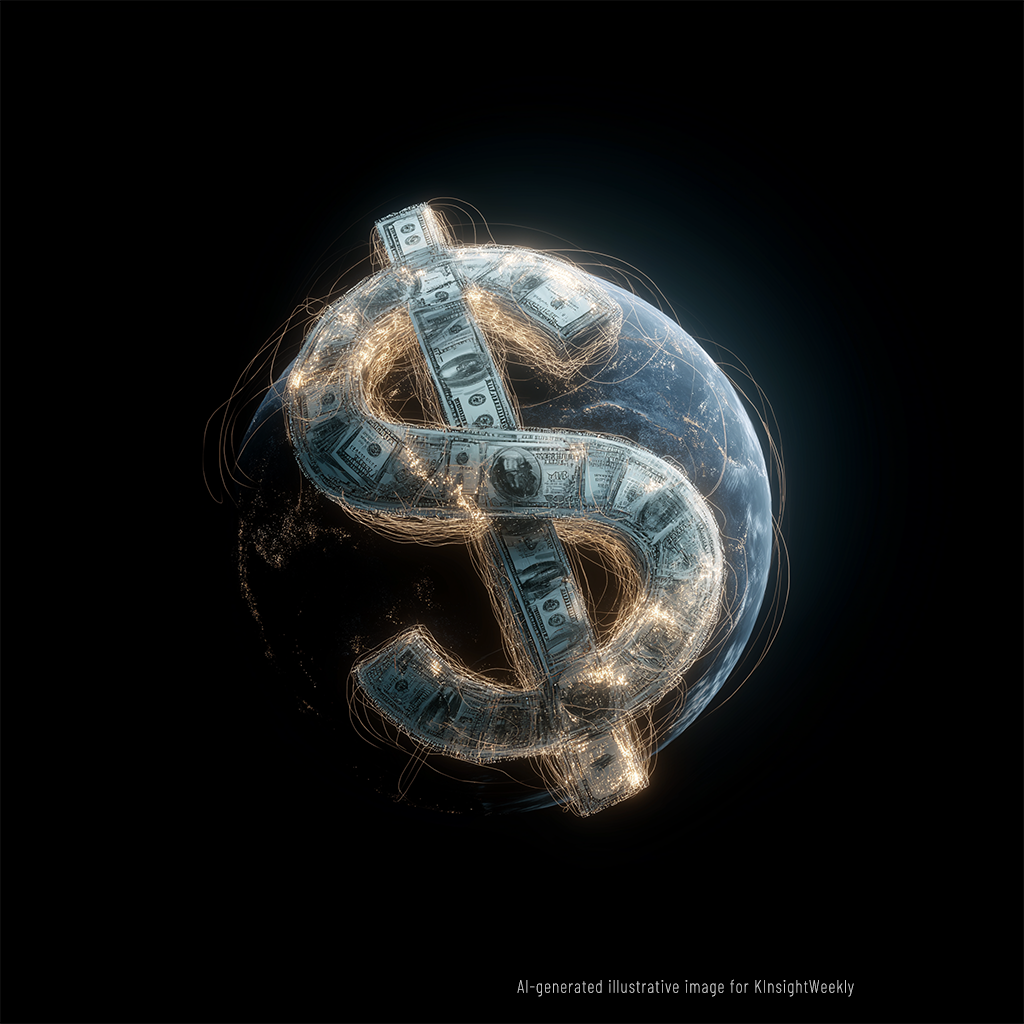The United States, claiming it can no longer tolerate persistent deficits, has once again reached for the tariff card.
As part of this strategy, Washington has demanded a $350 billion “cash investment” package from South Korea—an amount far beyond what Seoul can realistically afford.
Is America’s deficit truly a problem, or could it be the very engine that keeps the global economy running?
It is time to look beneath the numbers.
In late July, the United States pressed South Korea to provide a $350 billion investment package as part of ongoing tariff negotiations.
The proposal mirrored the offers made to Europe and Japan but added a controversial twist: a front-loaded, cash-based payment structure.
Seoul warned that such a massive cash outlay could destabilize foreign-exchange markets and trigger short-term liquidity risks.
Instead, it proposed a mixed model—loans, guarantees, and equity investments—to distribute the commitment over time.
Korea also insisted that, like Japan, any large-scale investment should be accompanied by a permanent currency-swap line with the U.S. Federal Reserve.
While the Bank of Japan enjoys such a standing swap arrangement, the Bank of Korea does not, leaving it more vulnerable in times of dollar shortage.
However, currency-swap agreements fall under the sole jurisdiction of the Federal Reserve—not the White House or the Treasury Department.
Meanwhile, Washington touted Japan’s $550 billion investment deal as a “cash contribution,”
prompting criticism in Tokyo that Japan had moved too hastily while Seoul was negotiating more cautiously.
When Japan’s Economic Revitalization Minister, Akazawa, admitted that “only 1–2 percent of the deal was actual cash,”
the narrative shifted: Japan’s package was not a one-time cash payment after all.
Following that revelation, U.S. negotiators slightly softened their stance toward Seoul.
South Korea’s Trade Minister Kim Jung-kwan has since made multiple trips to Washington,
engaging with Treasury Secretary Scott Bessent and Commerce Secretary Howard Rutnick.
Both have gradually come to recognize that a $350 billion cash transfer is simply unrealistic.
The latest U.S. position calls for $25 billion per year over eight years—a total of $200 billion—in cash investments,
while Seoul has countered with $15 billion annually over ten years—a total of $150 billion—in phased contributions.
President Lee Jae-myung told foreign media,
“We will not impose an artificial deadline on this negotiation, given its potential impact on domestic financial stability.”
On October 25, President Trump stated,
“If Korea is ready, the deal could be finalized at the upcoming APEC Summit.”
In other words, if Seoul accepts Washington’s terms, the deal will be sealed.
As the APEC Summit convenes in Gyeongju—the thousand-year capital of the ancient Silla Kingdom—
the world’s attention turns to Korea, where both the U.S.–Korea and U.S.–China summits are set to unfold.
Now one question remains:
Why is Trump pushing tariffs so aggressively?
His reasoning seems straightforward: the United States has suffered decades of deficits,
and its allies must share the burden through greater investment.
Yet this logic is only half right.
America’s deficit is not merely a matter of red ink—it is the mechanism through which the global economy circulates.
In most countries, a trade deficit signals crisis: foreign reserves fall, debt repayments strain the currency, and national credit erodes.
The United States, however, is unique.
As the world’s sole issuer of the dollar, America can finance its debt in its own currency.
When it runs a deficit, it is effectively supplying liquidity to the world.
When the U.S. imports more than it exports, dollars flow abroad—
and those dollars become the foreign-exchange reserves of other nations.
Korea, Japan, China, and Germany all trade in dollars, then reinvest those dollars in U.S. Treasury bonds, real estate, and equities.
In this way, America’s deficit becomes the world’s surplus, and its debt becomes the world’s asset.
This self-reinforcing loop is the essence of dollar hegemony.
The United States prints the dollars,
the world trades with them,
and the same dollars return to America’s asset markets.
The dollar has become not just a national currency but a global language of trust—
a network of credit that transcends borders.
That is why America’s deficit is not necessarily a weakness.
It functions as the main source of global liquidity:
when the U.S. runs a deficit, the world earns;
when the world earns, capital flows back into U.S. markets.
This paradoxical balance sustains the global economy itself.
Yet the system is far from flawless.
Excessive dollar issuance can fuel inflation and undermine confidence in the currency.
At the same time, outsourcing and cheap imports hollow out U.S. manufacturing.
Trump’s tariff policy, therefore, is less about reducing the deficit
and more about rebalancing a dollar-centric financial economy toward real-sector production.
Still, tariffs are no perfect cure.
They may protect domestic industries in the short run but risk disrupting global supply chains and driving up prices—
ultimately amplifying uncertainty across the world economy.
Trump’s tariff card thus represents both an attempt to defend America’s industrial base
and a symptom of the contradictions embedded within the dollar system itself.
For three decades since the end of the Cold War,
the U.S. has run persistent current-account deficits—yet its GDP has expanded steadily.
The dollar still accounts for 80–90 percent of international transactions,
and U.S. Treasuries remain the world’s safest asset.
In other words, America’s deficits have not destroyed its power;
they have sustained the global order built upon its currency.
This is the true foundation of U.S. hegemony.
As world leaders gather in Gyeongju this October,
with both the U.S.–Korea and U.S.–China summits on the agenda,
may the APEC Summit confront this structural reality
and serve as a forum to seek a new equilibrium and shared understanding in the global economy.
—
By Sunjae Park
Editor, Korea Insight Weekly

Leave a Reply